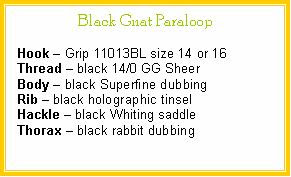







 I was recently bought the book 'Tying Flies with CDC' by Leon Links, this has proved an inspiration in the use of CDC. I have been tying a few flies over the last couple of weeks including this emerger. The possibilities and uses of CDC are endless as demonstrated on Dave Wiltshire's blog, http://davewiltshireflytying.blogspot.com/ and the website of Jean-Paul Dessaigne , http://www.jpdessaigne.com/index.htm.
I was recently bought the book 'Tying Flies with CDC' by Leon Links, this has proved an inspiration in the use of CDC. I have been tying a few flies over the last couple of weeks including this emerger. The possibilities and uses of CDC are endless as demonstrated on Dave Wiltshire's blog, http://davewiltshireflytying.blogspot.com/ and the website of Jean-Paul Dessaigne , http://www.jpdessaigne.com/index.htm. Last Friday I spent the afternoon tying at the Orvis shop in Burford as part of their open weekend. The afternoon was very rewarding, it was good to talk and share techniques with other tyers.
Last Friday I spent the afternoon tying at the Orvis shop in Burford as part of their open weekend. The afternoon was very rewarding, it was good to talk and share techniques with other tyers.Keith Passant, who works in the Orvis shop, will be undertaking a 24 hour tying marathon at the BFFI next month, principally in aid of Casting for Recovery, a very worthwhile charity. Please look up Keith if you are visiting the show and give your support. I believe there will be a raffle and auction during Sunday afternoon with plenty of items up for grabs.
If you haven't been to the BFFI before, it is well worth the trip, it is a great weekend, you can learn so much from some of the best tyers in the world. Take a look at the website, www.bffi.co.uk/
Whilst browsing the site this week I came across a link to Jean-Paul Dessaigne's website, www.jpdessaigne.com/. This is a fantastic site, with many excellent patterns, complete with tying instructions, this is worthy of a place in anybody's favourites.










 I fished the River Leach on Friday evening. The river is very much in need of some rain, but thankfully the flows are holding up nicely.
I fished the River Leach on Friday evening. The river is very much in need of some rain, but thankfully the flows are holding up nicely. 






 I have been tying a few Vulnerable Duns (a Chris Watson creation) in preparation for the new season. The fly has been tied on various sizes from 14 down to 22 using Aero Dry Wing with a few strands of Krystal Flash UV Pearl for the wing, a body dubbed with Superfine and ribbed with thread (ropped and coloured with permanant marker), a shuck of white McFlylon with a few strands of Krystal Flash UV Pearl and a hackle, in this instance, from a Metz Grizzly Hackle.
I have been tying a few Vulnerable Duns (a Chris Watson creation) in preparation for the new season. The fly has been tied on various sizes from 14 down to 22 using Aero Dry Wing with a few strands of Krystal Flash UV Pearl for the wing, a body dubbed with Superfine and ribbed with thread (ropped and coloured with permanant marker), a shuck of white McFlylon with a few strands of Krystal Flash UV Pearl and a hackle, in this instance, from a Metz Grizzly Hackle.







 Having been busy completing some decorating, there was no tying until after Christmas.
Having been busy completing some decorating, there was no tying until after Christmas.